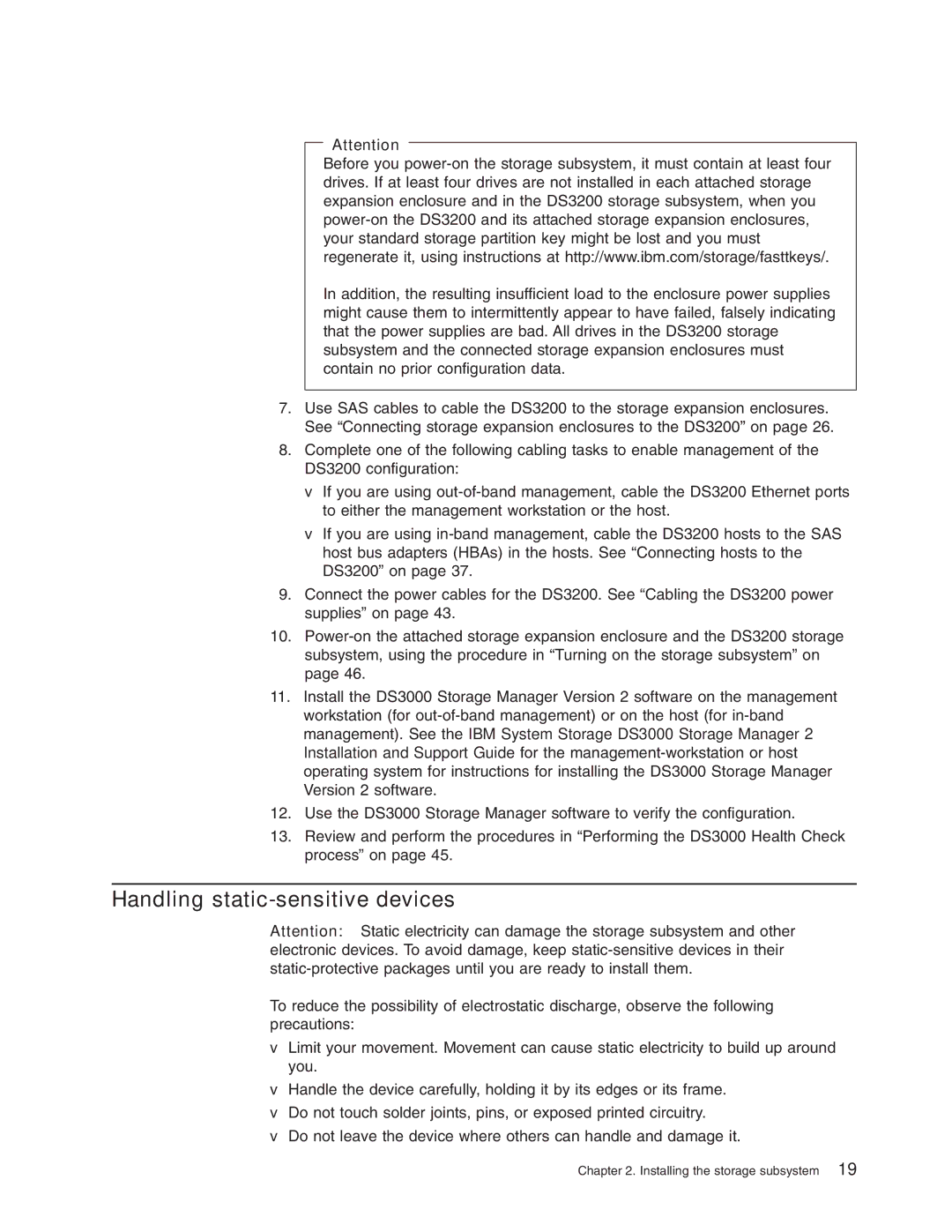
Attention
Before you
In addition, the resulting insufficient load to the enclosure power supplies might cause them to intermittently appear to have failed, falsely indicating that the power supplies are bad. All drives in the DS3200 storage subsystem and the connected storage expansion enclosures must contain no prior configuration data.
7.Use SAS cables to cable the DS3200 to the storage expansion enclosures. See “Connecting storage expansion enclosures to the DS3200” on page 26.
8.Complete one of the following cabling tasks to enable management of the DS3200 configuration:
v If you are using
vIf you are using
9.Connect the power cables for the DS3200. See “Cabling the DS3200 power supplies” on page 43.
10.
11.Install the DS3000 Storage Manager Version 2 software on the management workstation (for
12.Use the DS3000 Storage Manager software to verify the configuration.
13.Review and perform the procedures in “Performing the DS3000 Health Check process” on page 45.
Handling static-sensitive devices
Attention: Static electricity can damage the storage subsystem and other electronic devices. To avoid damage, keep
To reduce the possibility of electrostatic discharge, observe the following precautions:
vLimit your movement. Movement can cause static electricity to build up around you.
vHandle the device carefully, holding it by its edges or its frame.
vDo not touch solder joints, pins, or exposed printed circuitry.
vDo not leave the device where others can handle and damage it.
Chapter 2. Installing the storage subsystem 19
